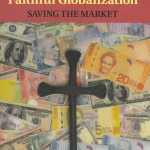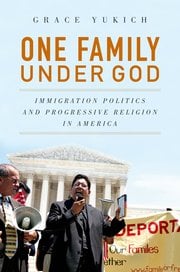Yesterday was an unusual Sunday for American Catholics, and reinforces the distinctive nature of worship in Catholic and Protestant Christianity. It was the long-anticipated introduction of the “new” Mass translation. It is, of course, a bit humorous to talk about “new” anything when referring to Catholic worship forms, but yesterday was a bona fide beginning as the 3rd edition of the Mass translation into English rolled out for mandatory use. Since the worldwide official language of the Mass is written down, in Latin, this is a big deal—bigger for priests than for parishioners, because the former have more speaking parts than the latter.
Many American Catholics have long ago memorized their lines, and even in one year’s time I pretty much had mine down. Except for the Nicene Creed, which—although I occasionally recited it in the Presbyterian and Reformed circles in which I ran—is sufficiently longer and more complicated than the Apostle’s Creed. My memorization skills, at age 40, are not what they were in college. If I’m remotely normal, then plenty of people will be using the pew cards for a long time to come.
I suspect memorized worship lines are a curiosity to evangelicals, among whom spontaneity retains not only psychological appeal but also religious appeal. Apart from the homilies, which are personally created and delivered, Catholic priests don’t really call an “audible” during Mass (to use a football image). To repeat the same lines over time and across locations can seem spiritually stunted. Ditto for praying someone else’s prayers. (Or for repeating the choruses of praise and worship songs.) It seems somehow inauthentic. And in the free market of evangelical worship, leaning too heavily on prescribed words and reading someone else’s prayers might well doom a congregation. And yet every day of the week, in every city in America and plenty of smaller towns, the same Scriptural texts spoken, the Mass is celebrated again, and people come. Repetitiveness apparently need not be dull.
But yesterday what American English-speaking Catholics will long repeat changed. It seems to be a more faithful translation of the Latin in very many ways, and it doesn’t take a Latin scholar to see this. (But it helps.) Anthony Esolen, professor of English at Providence College, wrote an excellent piece in First Things detailing—and contrasting, side by side—the literary advantages of the new translation.
One of the comparisons of old and new that he discussed therein appeared near the beginning of the service on Sunday. The old version of the translation from Latin reads:
All-powerful God, increase our strength of will for doing good
that Christ may find an eager welcome at his coming
and call us to his side in the kingdom of heaven.
And the new translation of the very same Latin text now appears as:
Grant your faithful, we pray, almighty God,
the resolve to run forth to meet your Christ
with righteous deeds at his coming,
so that, gathered at his right hand,
they may be worthy to possess the heavenly kingdom.
It really is striking. Read them again, with an eye for the subtle distinctions, as well as stark absences.
Being a newbie, I didn’t have much invested in the old version, so the newer version is easy to like. (And frankly I’m probably more impressionable now than I will be in 10-15 years.) However, this experience reminds me of disputes over preferred Bible translations, translation strategies, and how popular Eugene Peterson’s The Message became (and remains, so far as I can tell) among evangelicals. There’s a trade-off, to be sure, between readability, accessibility, understandability, and beauty. The former Mass translation seems to have majored in the former strengths, but lacked beauty, at least when compared with the new words. Nevertheless, the old translation enjoyed continuity in people’s lives for nearly 40 years, and I’m sure that counts for something. I know I still have a soft spot in my heart for the NIV of my youth, even though it’s no longer my preferred translation (which is the NRSV, in case you’re wondering). Indeed, all the major media outlets have featured a human interest story about the new Mass translation and the challenges of adjusting. Some skeptics perceive a conservative turn toward the pre-Vatican II era, when Latin Mass was the language of Catholic worship in America. I don’t know about that. I just think it’s a better translation.











